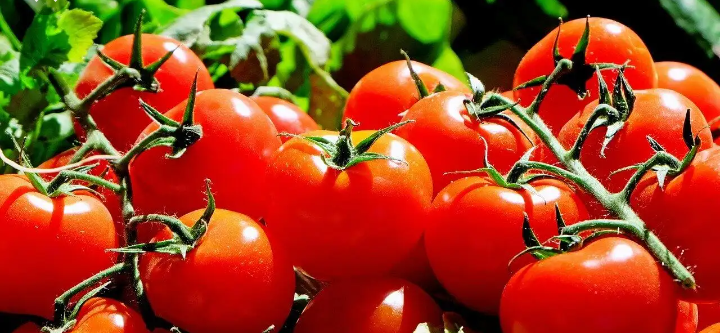
Steps To Producing Best And Healthier Tomatoes From Your Kitchen Garden.
Once you’ve got your tomato garden planted, it may seem like it’s time to take a step back, relax, and watch your plants grow and produce a bumper crop of tasty tomatoes. However, a little ongoing care and maintenance can mean the difference between productive, healthy plants and a disappointing yield. Here are our six essential steps to growing a tomato garden.
1) Proper spacing and planting in a tomato garden
Giving the plants in your tomato garden enough room to grow results in plants that are healthier, more productive, and less prone to diseases. Spacing depends on a few factors including the types of tomatoes you’re growing and how you intend to support the plants. Indeterminate tomatoes that are grown vertically on stakes can be spaced 18 to 24 inches apart. Compact, determinate varieties need 24 inches between plants. For more information on spacing tomatoes, check out this article I wrote on proper planting distances.
Smart planting means picking a good spot to grow tomatoes. They require full sun (at least eight hours) and decent, well-drained soil. Unlike many vegetables, tomatoes produce roots along their stems and if buried deeply at planting time will form a dense root system. I generally bury the bottom two-thirds of my tomato seedlings when I plant.
2) Staking and supporting tomato plants
There are so many reasons to support tomato plants. The biggest reason is that it promotes healthier tomato plants. Growing vertically allows better air circulation, less splashing of water onto leaves (therefore fewer occurrences of soil-borne diseases), and more light to reach the plants.
Tomato cages are widely available in garden centres and are fine for determinate, bushy varieties of tomatoes. Indeterminate or vining varieties, on the other hand can grow seven feet tall and require strong support. I like to use an eight-foot tall wooden or fiberglass stake which is inserted beside the seedling at planting time. As it grows, use twine to secure the plant to the stake. You can also buy or DIY tall square tomato cages for indeterminate plants. However, because I grow dozens of plants each season, these aren’t practical, easy to store, or economically feasible for me.
3) Mulching tomatoes
Mulch is perhaps the most crucial step of keeping a tomato garden healthy. Mulch covers the soil surface with an organic material like shredded leaves or straw. Why does that such a big difference? Placing a barrier on the soil surface reduces the splashing of soil-borne pathogens onto the foliage, but it also holds soil moisture, and minimizes weeds. I generally use straw, applying a two-inch thick layer around my tomato plants as soon as they are planted.
Some gardeners prefer to use a red plastic mulch or black plastic mulch in their tomato garden. I’m trying to minimize my use of plastic, but there are advantages and disadvantages to plastic mulches. They do warm the soil, accelerating growth, and like straw, keep weeds down and reduce soil-borne diseases. However, they make irrigation more difficult and you need to run soaker hoses beneath the mulch to provide water.
4) How to water tomato plants
We all know that plants need to be watered but did you know that proper watering of a tomato garden can reduce the occurrence of problems like blossom end rot? Blossom end rot results in black, leathery patches at the bottom of the fruits and, while it isn’t a disease, it is a condition triggered by inconsistent watering. Aim to water regularly, if there has been no rain, and never let plants dry to the point of wilting.
I use a two-foot watering wand and hose to irrigate my tomatoes, always watering the base of the plant, not the foliage. Spraying water on the foliage can – you guessed it – spread disease. Installing a soaker hose around the base of plants is another irrigation option that make watering quick and easy.
5) Fertilize your tomato garden
Tomatoes are heavy feeders and appreciate a steady supply of nutrients all season long. My goal is to feed the soil with plenty of compost or aged manure, as well as slow-release organic tomato fertilizers. I also apply a liquid organic fertilizer like fish emulsion or liquid kelp every three to four weeks during the growing season to encourage a generous harvest.
6) Monitor for pests and diseases
As you work in your tomato garden keep an eye on the plants. A quick inspection once or twice a week can help you head off any potential problems.
As my tomato plants grow, I continue to tie them to their stakes. I also remove the bottom leaves so that by the time my plants are full-grown, they usually have no leaves along the bottom foot of stem. These bottom leaves are often the first to discolor with issues like early blight and removing them can help reduce the spread.
Also watch out for any yellowing or curling of the foliage, brown spots, and other irregularities. If your garden is prone to tomato diseases, be sure to practice crop rotation, all the tips mentioned above, and grow disease-resistant varieties like Defiant, Jasper, and Mountain Merit.
As well, check out this informative article by Jessica on common diseases and what to do if they occur. We also recommend Epic Tomatoes, the excellent book by tomato expert Craig LeHoullier.
